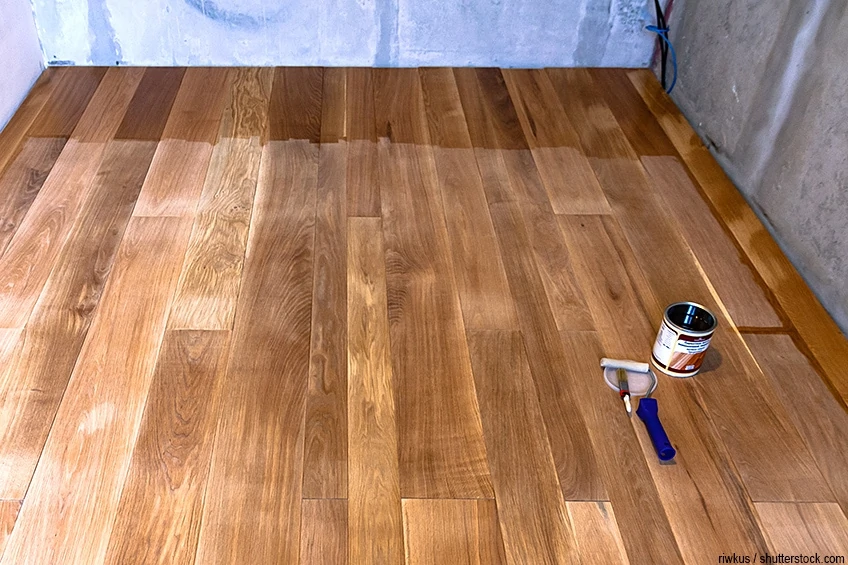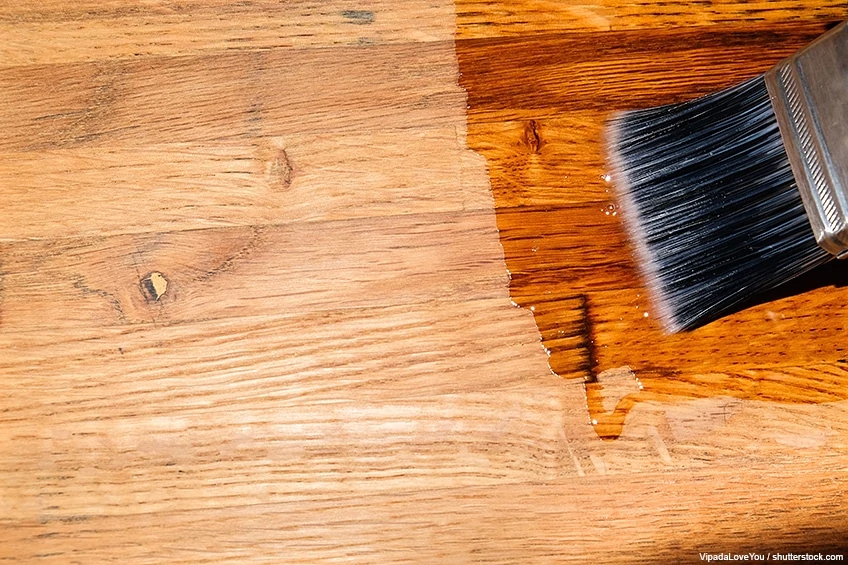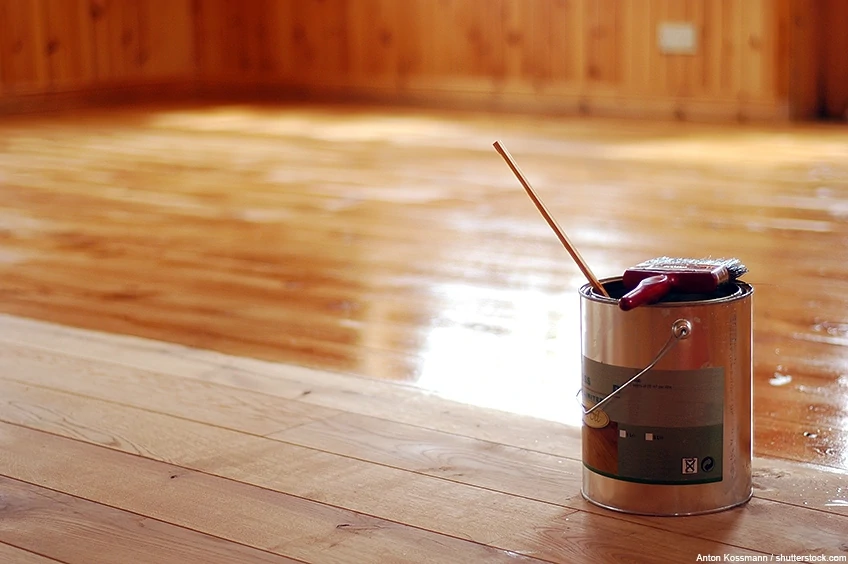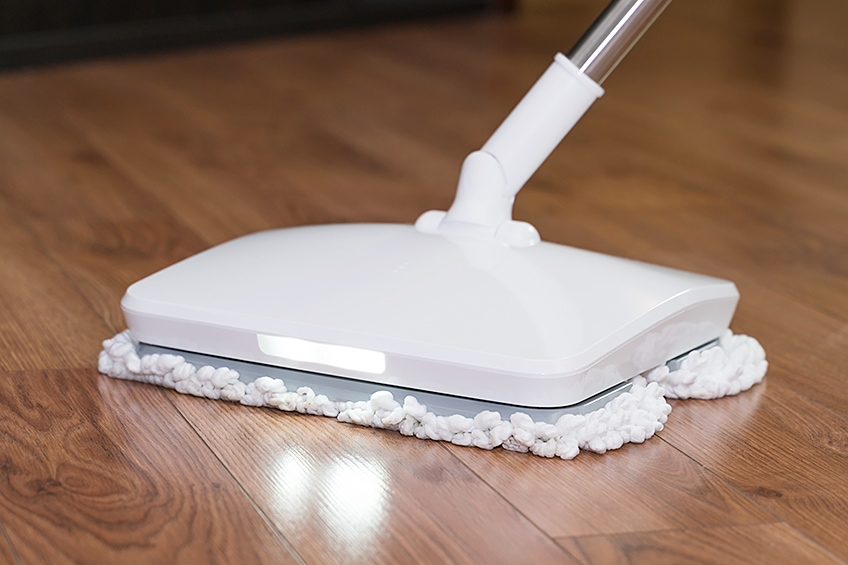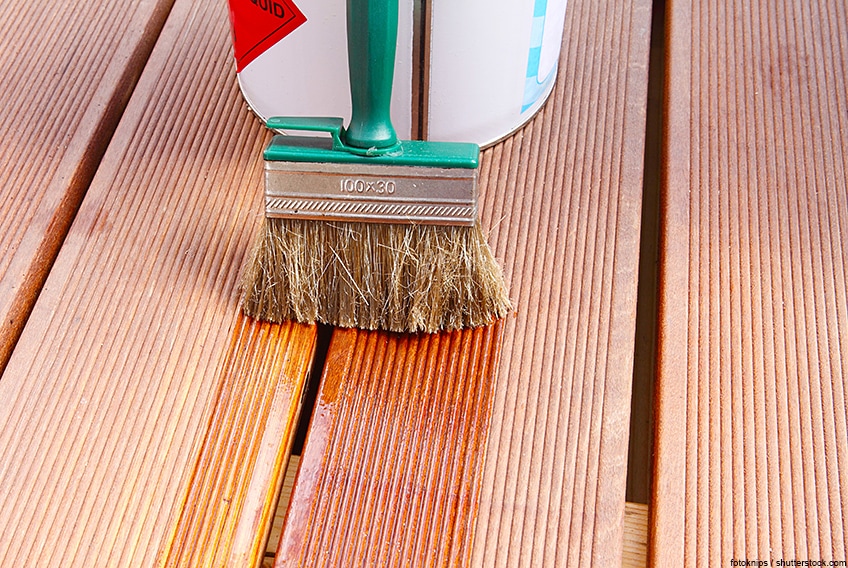How to Apply Polyurethane to Floors – In-Depth Guide
This post may contain affiliate links. We may earn a small commission from purchases made through them, at no additional cost to you. You help to support resin-expert.com
Are you considering refurbishing your floors? When making such a consideration, you have to realize that the quality and type of finish matters quite a bit. Polyurethane is recommended as the best possible solution to coat your floors. The polyurethane that is used on the floors can be water-based or oil-based and knowing all about polyurethane is beneficial when deciding how to protect your floors.
Table of Contents
How to Apply Polyurethane to Floors
Materials to use:
Deciding on the oil-based or water-based polyurethane option is the least of your worries. The real stress comes from selecting the best brand of polyurethane for you. Grab a note pad so you can jot down your research. Brands that are forthcoming in their product details are a great start. Also, choose a brand that you can easily connect with will be a wonderful idea.
For beginners, the idea is to rent an orbital sander from a local maintenance and improvement warehouse. For those who use polyurethane often, they will already have purchased an orbital stander.
Stock up on sandpaper of different levels. Most experts encourage you to buy 60, and 120 grit for starters.
Also important is the 220 grit sandpaper and a pole sander for using in between coats. A suggestion is using a broom handle and sanding block can mimic the action of a pole sander and therefore you may not need to purchase the pole sander.
Find the best urethane rated brushes, lamb’s wool, or synthetic applicator. When applying water-based polyurethane, grab a T-bar to do the job. Try to use a roller to get into difficult reach surfaces.
Preparation of the wooden floors
It is said that actually preparing the floors is the most tiring process. However, once you have purchased the necessary equipment, you can go through the preparation process without much stress.
The idea is to work on a clean wooden floor. Begin with vacuuming your floor to get rid of any dust mites that may have settled on the floor. Open all the windows so that cross ventilation occurs in the room that you are working in.
Use rougher sanding paper first when sanding the floors to remove the older finish. The floors must be observed thoroughly so that any dents become visible. Ensure that you vacuum the floors to eliminate all the dirt particles from the sanding process. Thereafter use a damp cloth. There is a tip of using a damp cloth. Mineral spirits can be used to dampen it.
The application of polyurethane to wooden floors
The idea is to mix the polyurethane mixture well. Air bubbles in the container mean your floor finish will not be ideal. Therefore a paintbrush can be used for stirring.
Make sure that you dip your brush into the polyurethane well, but tap off any excess substance. Apply from one part of the room. The grain direction serves as a guide for how to brush. Long overlapping brush strokes like that of an artist ensures an evenly spread of the substance.
Look to see if there is any dripping and remedy the spots before they dry. After the first coat, check for blemishes, and apply the polyurethane to corners so it blends into the boards.
Allow the first coat to have a good few hours to dry. Knowing the advisable drying time is best to ensure accurate time is given for drying. Any imperfections on the wooden floor, means you need to wet sand it.
Thereafter apply another coat of polyurethane. You will need to coat your floors three times, allowing for the correct drying time in between coats. It is recommended to show your flooring job to a professional in the field so that you know when your job is done.
Tips and tricks for applying polyurethane to your floor
Never shake polyurethane
For most things, you are required to shake before use. Polyurethane is one substance that should never be shaken prior to use. By shaking the formula, you can introduce bubbles which will severely hinder the finished look of your floors.
Clean working place
An important consideration when working with polyurethane is that you should never work in a dusty place that does not allow air to come through. Dust leads to imperfections in your finish. When using the best water-based polyurethane ensure there is enough drying time.
Dust can settle on the floors during this drying time if your environment is not kept clean. Strong smelling polyurethane requires you to work in a well-ventilated area.
Ensure a well-coated area
The idea when applying polyurethane is to apply thinner coats. Work on a flat surface to achieve the best application. This is to prevent drips and not affect the finish of polyurethane. A sharp blade can be used to scrape off any drips.
The idea is to minimize stains. Always apply thin coats on a flat surface. The idea of a thinner coat application is to reduce drips. Any drips that occur during the application process will spoil all your effort of achieving the ideal finish.
A blade can be used to scrape out drips if they do happen. Make sure to do this to eliminate floor flaws. Use wipe-on or a spray finish brush to evenly coat your floors.
Keep checking your floors
The room where your floors are left to dry should be well lit. This way you can notice any imperfections on the floor. You can check the coating to see if it’s too thin or too thick. You must also see if there are any bubbles on the wooden floor or if you missed coating an area. In this way, you can easily fix any floor blemishes with the next coat.
What Type of Polyurethane works Best?
Both oil-based and water-based polyurethane works wonderfully to protect floors. In fact, oil-based as well as water-based polyurethane can be used on all types of wooden floors but there is a noticeable difference on the floors when either one is used.
The first kind of polyurethane is water-based polyurethane for floors which has a clear finish when it is applied directly onto the wood. This type of polyurethane dries up easily so one can walk on the floors within 10 hours of application. The reason for using the water-based polyurethane is because it doesn’t contain any volatile organic compounds (VOCs).
This particular polyurethane does not emit any odor or produce any hazardous fumes. Cleaning your floors can be pretty easily done with some soap and water. So while maintenance is easy, the downfall of even the best water-based polyurethane is that using it requires you to repeat the process every 2 years.
Another factor of water-based polyurethane floor finishes is that they are also rather expensive to use especially since many coats need to be applied onto the floor or wooden surface.
When to use a water-based polyurethane?
- To gain a natural look on your floor. It doesn’t darken the floor in any way.
- If you are not impressed by products with strong smells and require an odorless option
- When you are applying a whitewash, and grey stain
- When you want to refine maple and go natural
- When you want to get it done quickly in the shortest amount of time
When will oil-based polyurethane work?
- If you want a darker stain on the wood that is when polyurethane works best
- If you want to budget and save some money
- If you would prefer a darker looking wooden floor
What Polyurethane to Select?
The reason that we require polyurethane is to keep floors well protected. It is advisable to always apply 3 layers of the polyurethane to wooden floors to achieve the best finish. One consideration to keep in mind when buying the best polyurethane for floors is to consider the brand you would like to buy. You must also know what you wish to gain from the product you decide to purchase.
This will mean considering the type of floor finish you would like to see. This will help you to decide if the water-based or the oil-based polyurethane is the best option for you.
Water-based or oil-based flooring finish?
A look back in time reveals that oil-based polyurethane was the most popular choice of polyurethane for floors. Yet water-based polyurethane with its clear finish, quick-drying ability and odorless application process has increased its popularity.
People have started taking a liking to the water-based flooring finishes because researchers have been hard at work trying to better the formula of the water-based polyurethane. The floor finish that is seen when using the water-based polyurethane is glorious making it a more pleasant and feasible choice.
Ideas on how to select the best water-based polyurethane
Longevity
The idea is to invest in polyurethane that lasts long. Decide whether the type of polyurethane you choose has any added components to make it long-lasting. When you apply water-based polyurethane you need not worry about the weather damaging your protected floors.
Drying time
Most water-based polyurethane is known for its quick-drying properties that make floors ready to use within days. Depending on how often you use your floors, a polyurethane solution that takes a day only to settle is best.
Smell
The application may be too much of a burden if the polyurethane has a distinctly bad smell. If the smell is of concern to you, choose polyurethane with minimal smell and ensure you apply to your wooden floors in a well-ventilated room.
Price
Your budget will allow you to decide which brand of polyurethane you will choose. The most cost-effective solution is the Mega Polyurethane which is proven to result in a high-quality floor finish.
Appearance
Furniture requires a transparent coating. A yellowish tint on furniture and exterior wooden surfaces will not look pleasing.
Cleaning requirements
Study the cleaning requirements when purchasing polyurethane and try to choose the option that seems the easiest to clean. If your wooden floors are used often, polyurethane that will work for you is one that will allow you to easily clean your protected floors.
Frequently Asked Questions
What Polyurethane would work for my floors?
It is expected that you won’t go wrong with water-based polyurethane so that you can get the best results quickly. The other reason why you would prefer water-based polyurethane is because it is cost-effective. The perk of oil-based polyurethane is that it is shiny and results in a softer finish.
Using oil-based polyurethane, and having a shiny floor is all well and good but more people may slip and fall. That is why it’s best to stick to a water-based polyurethane floor.
Why use water-based Polyurethane for floors?
Water-based polyurethane has become the preferred choice. It also prolongs the lifespan of your floors and wooden objects. The polyurethane can be used on floors that are not wooden as well. So why opt for water-based polyurethane?
Simply because it coats floors quickly and dries up faster than oil-based polyurethane. The water-based polyurethane looks lighter and does not alter the grain color of the wood.
What is the drying period for water-based polyurethane?
You always need to know the time it will take for your floors to dry. Environmental conditions can alternate the drying time, so make sure you adhere to the preparation of your floors to ensure you don’t ruin the floor.
Each polyurethane container will have a label with the details of drying times with each type of water-based polyurethane having a different drying time. Most polyurethane requires at least a day to dry fully.
Even though it states waiting a day before walking on your floors, within 4 to 6 hours, the solution dries but the curing of the floor occurs after 24 hours. Try to avoid walking on the floors with shoes or bare feet, as well as with dogs.
To sand or not between polyurethane coating?
Yes, sanding is essential after each coat dries. After the coats dry, it is advisable to use fine-grit sandpaper and apply it to the surface. To avoid ruining your hard work use light strokes of the sandpaper and choose a fine sandpaper option.
How to Refine your Floors?
Some damage will inevitably occur over time on the floor, and the polyurethane need to be applied again as it is the main barrier between the floor and damages. Touch up is required after a while.
You will need to reapply polyurethane every 7 to 10 years so expect the polyurethane to only last that long. Again the life span cannot be pre-determined as each floor is different depending on wear and tear. Another type of floor that needs regular refinishing is floors that are wet often.
A roller for polyurethane applications?
The best tool for applying polyurethane is a paintbrush. You can use a roller as well. It is best to use a roller to achieve the desired flawless wooden floor look. Always use a brush that has been dipped in some mineral spirits. Using a roller brush saves time, and is a better choice.



